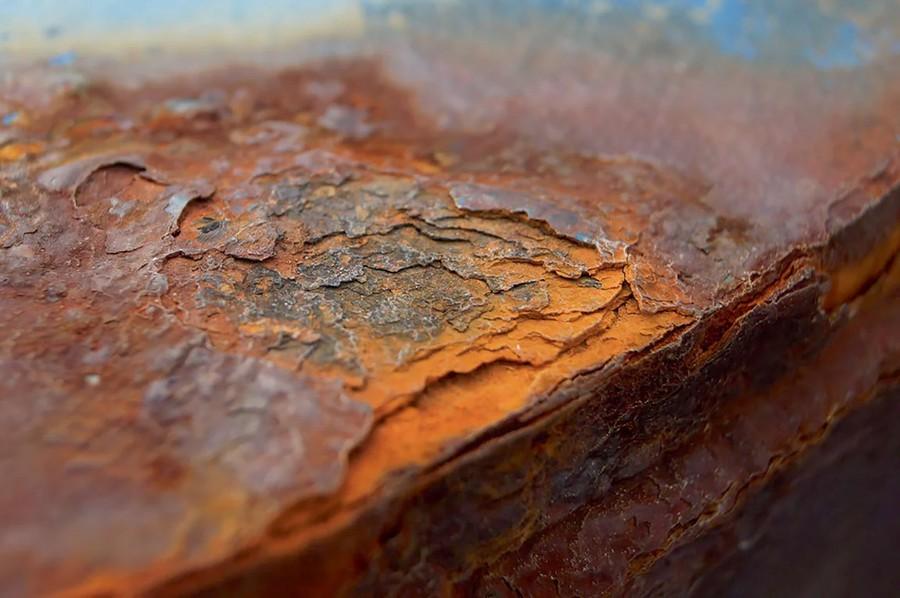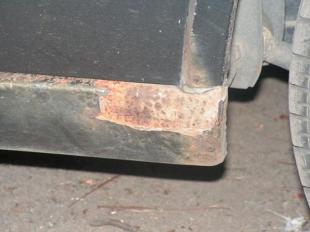
During corrosion
 Initially, a small pocket of rust can cover the body of our car for several months. What can I do to protect my car well?
Initially, a small pocket of rust can cover the body of our car for several months. What can I do to protect my car well?
Initially, a small pocket of rust can cover the body of our car for several months. What can I do to protect my car well? Attack ahead of time!
The first step is a decent car bath. Not only outside, but also pay attention to the thresholds and various nooks and crannies. As well as the chassis and wheel arches. It is much easier to detect rust on a clean car, especially when it is not yet in full force. The most vulnerable places are, among other things, the lower part of the door. Even new cars can be prone to corrosion in this area!
The second such place is the rims of the wheel arches. Especially after winter, salt and stones can cause rust. 
Thresholds are much better protected. However, they are also very vulnerable to corrosion. Cause? In winter, a large amount of salt is deposited there, and a small pebble is enough for the red color to appear without our consent.
The rest of the floor is better protected, but the protective layer can be damaged when driving on sandy or snowy ruts. To make it easier to see the rust and wash off the salt, wash the chassis with a pressure washer. It can be used at gas stations or hand car washes. The device itself costs PLN 200-300. The channel will come in handy - yes, for comfort.
Where else does rust strike?
You should also pay special attention to rust spots in the area of \uXNUMXb\uXNUMXbjoining sheets. If we find them there, it means that the closed profiles were struck by corrosion. In addition to external elements, you should also pay attention to the floor inside the car. Many people forget about this, and after a while it turns out that the corrosion attack has reached the cabin. Very often, water from melting snow on carpets gets under the upholstery. It takes a bit of effort to check out these places, but it's better to be sure than to expose yourself to a lot of expenses later.
Corrosion control has two options. We can entrust the work to specialists or do it ourselves. As a rule, it is better to entrust large fires to professionals, and deal with small traces on your own. The most important thing is accuracy! For the whole procedure to make sense, it should be carried out in warmth. Humidity is highly undesirable. The first stage is grinding, cleaning sheet metal from rust. There can't even be the slightest bubble! Paint the cleaned places with primer paint, then fill the voids with putty, sand and varnish.
How to secure?
As with any problem in the world, it is better to prevent than to deal with the consequences of various unpleasant deeds. The same is true for corrosion. There are several ways to stop this.
Firstly, the protective substance is injected into the closed profiles, into the fenders, into the doors, in general, wherever possible! Typically, the manufacturer preemptively provides for such holes in their designs. They are protected by plugs. If there are no such holes, technological holes can be used. In the case of multi-year cars, wax-based substances are used. They provide effective water protection.
However, cracks appear after a while. Oil-based products are best for older vehicles. They go all over the place and react with rust, preventing it from getting any further. This is the best protection against corrosion! The cheapest security of this type has a minimum value of PLN 250. The frequency is once every two years.
Such drugs are injected into the doors, under the plastic wheel arches, on the entire chassis and its nooks and crannies. Also - after removing the interior elements - the racks and the rear bar of the body. Importantly, the car should not be washed for several days so that the oil reacts with rust and can effectively protect it. All the other great ways don't make much sense in the long run. Sprays that protect against stones can only be an additive.